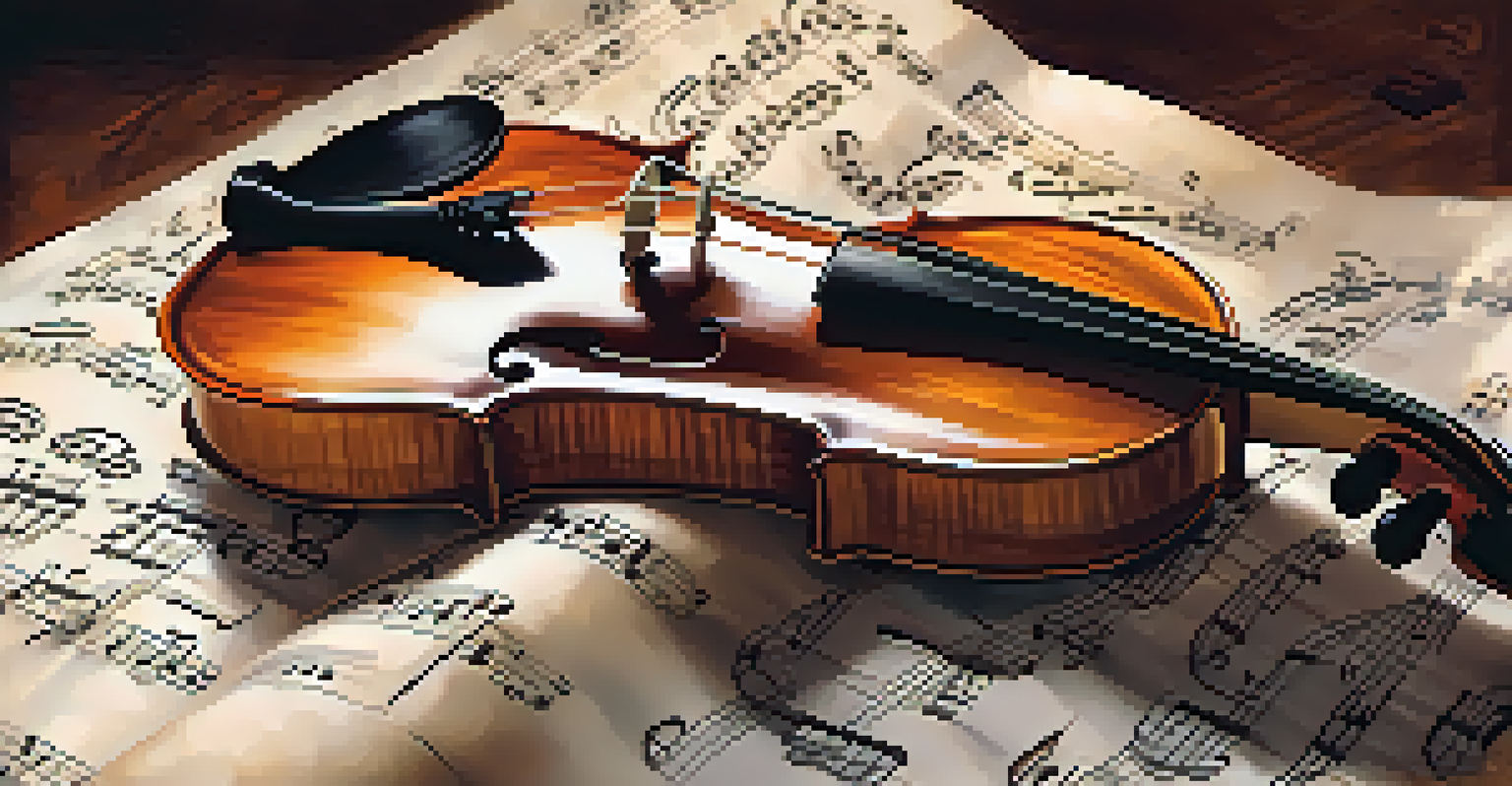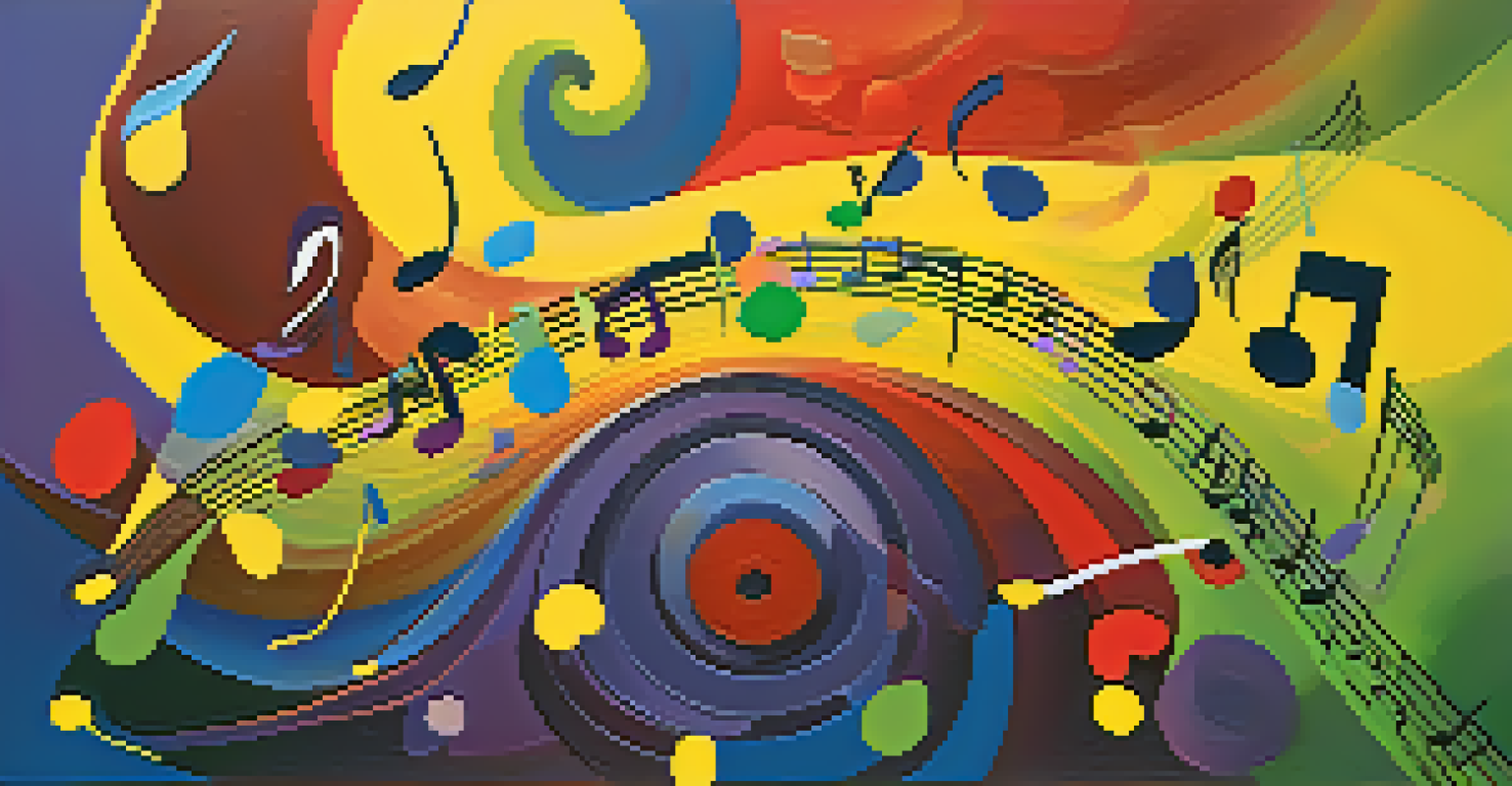Understanding Form: Structuring Your Music Compositions

What is Musical Form and Why It Matters
Musical form refers to the structure or blueprint of a composition. It’s like the architecture of a building; without a solid foundation, everything can collapse. Understanding form helps composers create a sense of direction and coherence in their music.
Music is the shorthand of emotion.
Different forms can evoke various emotions or responses from the listener. For instance, a repetitive structure might create a sense of comfort, while a more complex form can provoke intrigue. Knowing how to effectively utilize form allows you to guide your audience through an emotional journey.
Ultimately, a well-defined form is essential for any piece of music, as it not only enhances the listening experience but also helps the composer stay organized throughout the creative process.
Common Musical Forms: An Overview
There are several common forms in music, such as binary, ternary, rondo, and sonata. Each of these forms has unique characteristics that can influence how a piece unfolds. For example, the ternary form (ABA) offers a contrasting section that can surprise and engage listeners.

Another popular form is the rondo, where a recurring theme is interspersed with different sections. This creates a lively atmosphere and keeps the audience entertained while providing familiarity. Understanding these forms can inspire composers to experiment with their compositions.
Understanding Musical Form
Musical form serves as the structure of a composition, guiding both the composer and the listener through an emotional journey.
Familiarizing yourself with these structures isn’t just about knowing the definitions; it’s about recognizing how they can be applied creatively in your own work. By experimenting with these forms, you can discover new ways to express your musical ideas.
The Role of Repetition in Composition
Repetition is a powerful tool in music composition. Just like a catchy chorus in a pop song, repeating certain musical phrases can make your piece memorable. It creates familiarity, allowing listeners to connect more deeply with your work.
The only love affair I ever had was with music.
However, it’s important to balance repetition with variation. Too much repetition can lead to monotony, while too little might leave listeners feeling lost. By strategically placing repeated elements alongside new ideas, you can maintain interest throughout your composition.
Think of repetition as a thread that weaves through your musical tapestry. It binds the piece together while allowing different colors and patterns to emerge, creating an engaging and cohesive listening experience.
Creating Contrast: Enhancing Your Music's Dynamics
Contrast is essential for keeping your music engaging. It can come in many forms, such as changes in dynamics, instrumentation, or themes. By creating contrasting sections, you can highlight specific ideas and evoke different emotions.
For example, transitioning from a soft, gentle verse to a loud, energetic chorus can create a dramatic effect that captivates listeners. This dynamic shift not only adds excitement but also emphasizes the significance of each section.
The Power of Repetition
Repetition in music creates familiarity and connection, but must be balanced with variation to maintain listener interest.
When composing, think about how you can use contrast to your advantage. By carefully planning these shifts, you can create a more dynamic and compelling piece that draws your audience in.
Developing Themes: Expanding Your Musical Ideas
Thematic development involves taking a musical idea and expanding upon it throughout your piece. This can include altering the melody, changing the harmony, or experimenting with rhythm. By developing your themes, you can create a rich and evolving musical narrative.
For instance, a simple melody can be transformed through variations, making it more complex and interesting as the piece progresses. This not only showcases your creativity but also keeps listeners engaged as they anticipate how the theme will evolve.
Think of thematic development as storytelling through music. Just like a good book, your composition should have a clear progression, allowing your audience to experience the journey alongside you.
Transitions: Smoothly Connecting Your Musical Ideas
Transitions are the bridges that connect different sections of your composition. They are crucial for maintaining flow and coherence, ensuring that listeners don’t feel jolted as the music shifts. A well-crafted transition can enhance the overall listening experience.
For example, a simple crescendo can serve as an effective transition from a quiet passage to a more intense section. Alternatively, a change in instrumentation can signal a shift in mood or theme. These techniques help create a seamless journey through your music.
Importance of Structure
A clear structure in music composition enhances storytelling and allows ideas to unfold logically, enriching the listener's experience.
As you compose, pay attention to how your sections flow into one another. Thoughtful transitions can elevate your music from good to great, making it more enjoyable for your audience.
The Importance of Structure in Music Composition
Having a clear structure in your music compositions is vital for effective storytelling. Just like a well-organized essay, a structured piece allows your ideas to unfold logically and engagingly. This clarity can make a lasting impression on your audience.
A solid structure helps you convey your musical message more effectively. It allows listeners to follow your creative intent and fosters a deeper appreciation for your work. Good structure doesn’t limit creativity; instead, it provides a framework within which you can explore your artistic expression.

As you continue to compose, remember that structure is your ally. It can help you harness your ideas and present them in a way that resonates with your listeners, ultimately enhancing their experience.